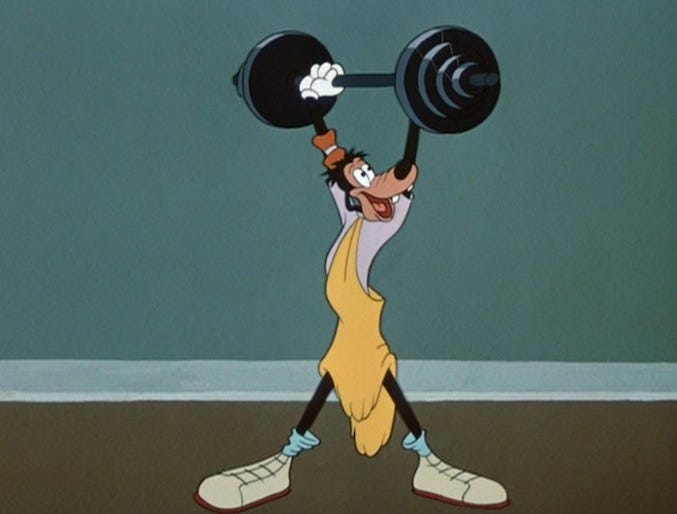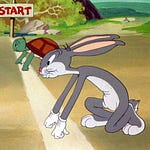Last week, we talked about muscles and I shared some info from my interview with Dr. Ben Bocchicchio , who has spent over 40 years studying muscle fibers, how they work and how to train them. This week, I want to take that out into the real world for the everyday “fathlete” with 15 Minutes to Fitness: Dr. Ben's SMaRT Plan for Diet and Total Health.
At first glance, 15 Minutes looks like any of the other diet books that flood the market every January: an outlandish promise (get fit in 15 minutes? Really??), a flashy cover featuring photos of buff models who have likely never been out of shape in their lives… But citing the case of Book v. Cover, there’s actually more to it than meets the eye. What I really love about this book is that very early on, Dr. Ben’s unique perspective shows up.
what is exercise?
When you think about it, we use the term “exercise” pretty loosely. Dr. Ben points out that we use the word to refer to everything from growing tomatoes to running a triathlon. For a guy who dedicates his life to the research and practice of exercise — in particular, using it as a therapeutic intervention to achieve weight loss and health — it’s important that we put a finer point on it.
For that reason, Dr. Ben starts with making the distinction between “activity” — anything that gets us up and moving, such as hobbies or sports — and “exercise,” which he defines as a targeted intervention that “manipulates your muscle fibers in a specific way for productive weight loss.” In fact, he says, the right kind of captial-E Exercise “positively impacts many other systems in our bodies: cardiovascular, respiratory, endocrine, nervous, skeletal, and so on.”
2b or not 2b?
So what’s Dr. Ben’s prescription to achieve all these benefits? The key to effective exercise is in the muscle fibers worked. In my last post, I shared Dr. Ben’s Famous Muscle Fiber Chart and we talked about the different fibers. In the book, he then goes on to explain that when we exercise our 2B muscle fibers, specifically, all kinds of good things happen:
Your muscles and bones get stronger
Your metabolism increases (meaning that you burn more calories all day long)
Your heart and lungs get more efficient
Beneficial hormones in your body and brain are stimulated, which keep you looking young and feeling sharp
So how can we be sure to use those 2B fibers? The good news is that it’s not complicated and doesn’t take long. The bad news is that we have to embrace failure.
See, the body doesn’t really want to use the type 2B muscles. They take a lot of energy, and require us to use up our glycogen — a form of sugar that we store in our muscles for a fight-or-flight emergency. The body wants to be efficient, so it will use Type 1 for as long as it can, and only recruit the big guns when absolutely necessary — meaning, when the lower-level fibers can’t handle the load.
success through failure
To experience this for yourself, try doing a wall sit: push your back against the wall and come into a “sitting” position with your knees bent at 90 degrees — like you’re in a straight-backed chair, but minus the actual chair. (Why not try it now? In fact, see if you can hold it while you finish reading this article. I dare you!)
At first, you won’t feel much of anything. The easygoing Type 1 muscles are able to keep you upright just fine. But as seconds tick away, they’ll begin to tire, and your body will ask the Type 2a fibers to help out. Then Type 2ab. Then Type 2b. If you stay there long enough, you’ll feel a burning sensation in your quads, your heart will beat faster, your breath will become labored, and finally, you’ll reach the point where you can hold it no longer. Welcome to muscle failure.
work SMaRTer… but also work harder
Dr. Ben’s SMaRT (Slow, Maximum Response Training) workout, developed over his 40-plus years of experience, and tested in clinical trials at places like Johns Hopkins University, leverages that failure point in each of the major muscle groups in the body.
That may sound like a heavy lift, but it actually only takes 8 exercises, each done for about 30-90 seconds. This is where the “15 Minutes” promise comes in. And because they take a long time to recover, he recommends only doing the workout twice a week. “I’m a bang-for-your-buck kind of guy,” Dr. Ben told me, “hit that failure and get outta Dodge.” In other words, the SMaRT workout represents what they might call in medicine the “minimum effective dose” of exercise — the shortest distance from point A to point 2B.
Sounds simple, right? It is.
Sounds quick? It is.
Sounds easy? It is not.
“Muscle failure” is just as unpleasant as it sounds, and after 15 minutes or so of systematically destroying — er, fatiguing — every major muscle group in the body, I usually wobble away sweaty, red-faced and feeling like a wrung-out dishrag. But on the plus side, I always feel like I’ve done something, and in the two days of recovery, my sore body confirms it.
beginning and re-beginning
When I first found 15 Minutes, it was December of 2019. Rowing season had ended, and I decided to use Dr. Ben’s workout over the winter to try to work on strength and fight off the inevitable holiday weight gain, so I hit the Nautilus machines at the local Y. It was great. I very quickly saw progress in my leg press, leg extension, and rows, and within a few months I was close to using the entire weight stack on several of these machines.
Then March 2020 hit and, well, no more Y. Luckily, Dr. Ben provides three different versions of the workout in his book, so if you don’t have access to a gym, you can use a set of resistance bands or an at-home Total Gym machine. (Remember those Chuck Norris infomercials? Yep, Dr. Ben was the one who trained him. (And if, as popular culture tells us, Chuck Norris is the ultimate badass, then that makes Dr. Ben the badass’s badass, in my book.))
Stuck home in lockdown, I bought myself a set of rubber cables on Amazon for $25 and managed to keep up the routine for another month or two. Unfortunately, my lazier angels got the better of me, and I eventually fell out of the habit. But I’ve recently managed to pick up the bands again and get back to it. (Here’s to re-beginnings, right?)
My assessment? It’s definitely a tough workout, and not always a pleasant one. But on the other hand, it’s over with quickly (15 minutes is a stretch — it usually takes me in the range of twenty, but still not bad) and since it’s so short, and since I do it at home, there’s really no excuse not to squeeze two of these sessions into my week.
For a more detailed look, check out Dr. Ben’s site, where he’s got video tutorials of all three versions of the workout, using actual clients of all ages and fitness levels.
And even though he gives it away for free, the book is still worth a read, in my view, because it’s interesting to know the science behind the program and helpful to understand all the ins and outs. Plus, it includes his “controlled carb” eating plan, which is a great way to get started on a low-carb diet.
As of a few weeks ago, I’m back to rowing on the water with my crew, but I’m going to try to keep the SMaRT workout as part of my weekly routine. I think the combination will be a good balance of “activity” and “exercise.” I’ll keep you posted!
Oh, and for those of you still holding that wall sit, congrats! You may collapse now.
PS: This week I’ll be doing a super-secret BONUS video FOR SUBSCRIBERS ONLY! Be sure to subscribe using the shiny, red, candy-like button below. All it takes is an email address (even if it’s just your standard fake)!
Note: The ramblings published on this blog are the opinions of the author alone and shared for entertainment purposes only. The author is an English major with no medical or scientific background; thus, his words should never be taken as medical advice. Consult with your doctor or medical professional before undertaking any diet or exercise program.












